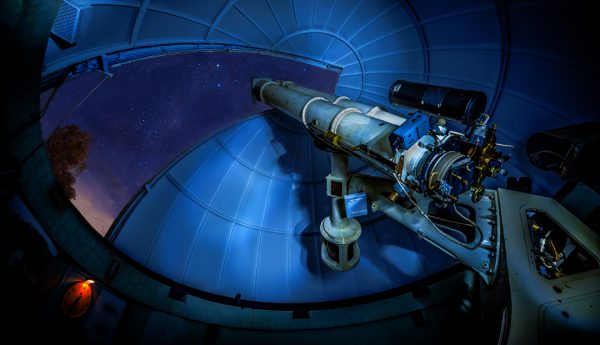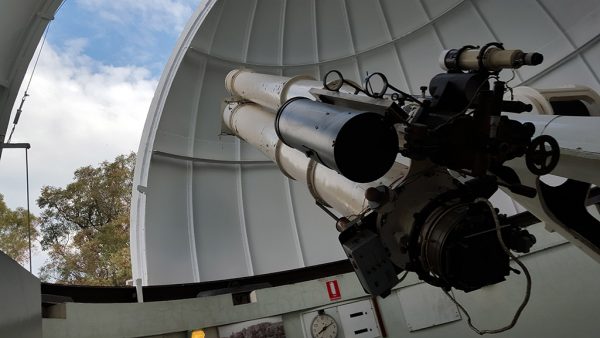Restoring an impotant part of WA's history

In the late 19th Century, astronomers world-wide embarked on a massive mission to map all of the sky visible to a 30 cm telescope. To achieve this, a standardised form of Astrograph (“star camera”) was specified. Many of these were made by Henri Freres of Paris, but six were made by Howard Grubb and Co in Dublin, Ireland. Grubb was one of the foremost telescope makers of the time and his instruments were in high demand throughout the world.
The Perth Astrograph was ordered in 1896 and installed in 1900, at the former Observatory site on Mount Eliza. It came from Ireland as a kit of parts including the optical tube assembly, mount and dome. The Perth Astrograph produced thousands of photographs on glass slides, covering a wide swath of the southern skies. In the 1960s, when the Observatory was relocated to Bickley, the Astrograph came too, along with its original mount and dome, which were reassembled at the new location.
Most of the original Astrographs have been destroyed, discarded or lost. The Perth Astrograph is unique in being the only Grubb Astrograph still operating with its original optical tubes, mount and dome.

Now approaching 120 years old, the Perth Astrograph is suffering the ravages of time, with paint flaking off, some rust setting in, and the mechanical components in need of repair. The Perth Observatory Volunteer Group (POVG) has embarked on a program to completely refurbish the instrument. This will include removal and cleaning of many ancillary parts and fittings, removal of the existing white paint from the telescope and mount, treating of corrosion and an entire repaint. Because the existing paint is lead based and due to the fragility of the telescope, we will need to use time-consuming manual methods to strip the paint and prepare the surfaces for repainting.
The volunteer effort will amount to hundreds of hours, and we will need to purchase around $5,000 worth of materials and consumables to complete the task. This will include the purchase of chemicals, scrapers, paint, brushes, personal protective equipment and so on. The project is being sponsored by Perth based company Saferight, a leading provider and manufacturer of safety training and equipment, who have donated the use of scaffolding equipment free-of-charge for the duration of the project to allow our volunteers to safely access the telescope.
Considerable preparatory research has gone into the project, including consultation with museums who have restored similar instruments, as well as discussions with conservators, subcontractors, Worksafe and DBCA.
Works commenced in March 2019 and are anticipated to be completed in April 2019.





